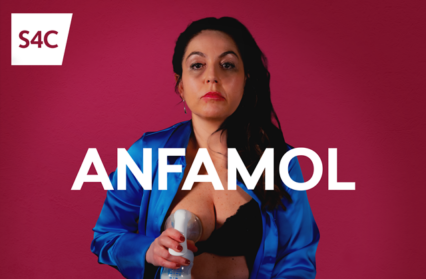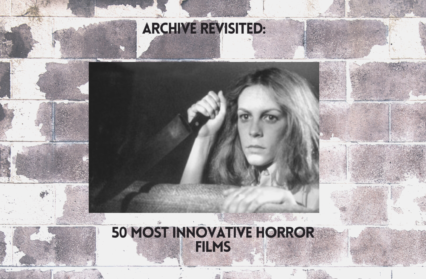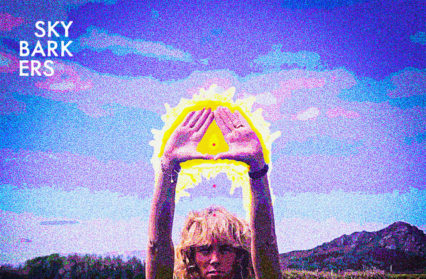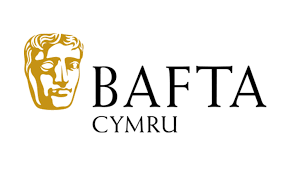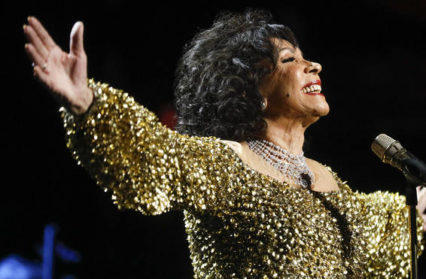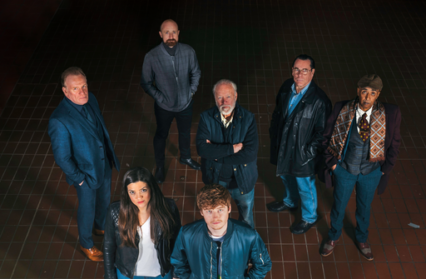Gary Raymond reviews the BBC Wales’ televised production of Dylan Thomas’ Under Milk Wood.
The Dylan Thomas celebrations hit their peak this last Monday, with BBC Wales’ flagship celebrity celebration extravaganza, a new televisual production of Under Milk Wood. The roller deck at the Llandaff production office must have sparked like a Catherine Wheel as it spun over, apparently not missing out a single living Welsh television personality. Some of them, even, were actors, although many of the iconic roles were reserved for anybody who had ever appeared on Saturday Night prime time television (Tom Jones, Katherine Jenkins, Charlotte Church etc). There was indeed a danger that this was Welshness as the English see it – Shirley Bassey must have been washing her hair.
But Under Milk Wood is, of course, Welshness how the English see it, because much of how the English see it is because of the dominance of Thomas’ ultimately pleasing but light evocation of rural-town Welsh life in the forties and fifties. The beauty and candour of the play is entirely in the language. Under Milk Wood is formless and plotless, and is a poem by any other name.There have been many attempts to instil drama into the proceedings, for television, film and stage. But Under Milk Wood is what it is, and a successful production of it, never mind adaptation, must first come to terms with this restriction.
A meandering breeze of the dreamscapes of its characters Thomas’ play has frustrated generations of its admirers who wanted it to be so much more, wanted it to be Ulysses or Waverley or a la Recherche de temps perdu or Middlemarch, or any of the heavyweight national works that have geographically hemmed it in. And this, you may be surprised to hear, is exactly why BBC Wales’ new production is such a success. It is one of the few productions of Under Milk Wood that has attempted to address the work on its own terms – not just echoing it is a ‘play for voices’, but remembering that too.
That this BBC Wales production of Under Milk Wood seemed tidily ramshackle was no mistake, it is in the true spirit of Thomas’ work. A patchwork of voices and noises and colours and characters, a modernist impression of a place, a microcosm that has taken the pinprick of Llaggerub and stretched its meaning and poignancy across oceans and continents. That this production could have failed spectacularly is on the face of everybody taking part – not in their gestures, but in their status. It shows a great deal of skill from the production team that it does not. The ‘now what have I seen him/her in’ parlour game could have scuppered the whole thing, and one did not have to strain to hear a nation muttering, ‘Was he on Miranda?’, ‘Was he one of the hobbits?’, ‘I had no idea she was Welsh!’ and ‘I have no idea who that is!’ – which, of course, wonderfully, makes us sound like a nation of Under Milk Wood characters.
And this was the crux of the success of the production: there was something in the way the camera moved, the way the lines were delivered, the casting (no matter how cynical one might have been at first) that really made this about, at least, an aspect of Welshness.
The male Welsh timbre carried weight. Robert Pugh was immense; Michael Sheen an obvious and correct choice as First Voice as he continues to prove he is the only heir in town for the Burton/Hopkins throne; Jonathan Pryce shows he still hasn’t done too many adverts to deaden his silky yet sinister trustworthiness; Andrew Howard was as grizzled and choppy as a blustery Laugharne morning. Matthew Rhys, Ioann Gruffydd and Jonathan Rhys Davies were charismatic in the dusting off of their Welsh accents.
Of the female roles, Kimberley Nixon as Mwfanwy was charming and feisty; Sharon Morgan impressive as Mary Anne Sailors, and Eve Myles as Lily Smalls was assured and cheekily sullen; Di Botcher and Sian Thomas were having a lot of fun as Mrs Dai Breads one and two. Others came and went, some successfully, others huddled on a sofa like some kind of advert for a TV dinner, but the spirit was correct – Thomas’ play is imperfect, uneven, overdone in places and undercooked in others. It is, after all, a radio play because the radio would pay him for it. If the National Theatre had existed, and offered him money for it, chances are it would have had a plot and form. As most people suspect, Thomas’ crowning achievement, had he lived, may have been his libretto for Stravinsky, something that would have forced shape and discipline to his dreams whilst retaining the weight of his classicised dense poetics.
The highlight of this production, and its wattle and daub, was Aimee-Ffion Edwards, a gleefully charismatic voice. There was the suggestion of a real connection between Edwards and the lines that went far beyond the collectivised sense of occasion that always infests these celebratory one-offs. She gave the piece balance, a backbone, a relaxed and dignified air to a dangerously vaporous narrative. It is difficult to imagine how the (Laugharne) Voice could have been cast better. Edwards’ caramelised accent wrapped around her every phrase, a sister act to Thomas’ own Druidic incantations. This BBC Wales production of Under Milk Wood is worthy for many reasons, but for Edwards it was worth it alone.
Of the disappointments, they flash like sunspots on a grey Laugharne day. Charlotte Church’s scowl made of pure Welsh am-dram ham, Sian Phillips’ oddly unconvincing Welsh accent, Katherine Jenkins’ primary school naptime delivery, Tom Rhys Harries doing some kind of boyband Noel Coward, Tom Jones delivering every line like he won it in a raffle. But every one of these performances grows on you. The love for the material, and the approach that director Pip Broughton has given it, comes through every frame. There are nods to the camera, smiles between characters, thigh slaps and high fives… at least it feels that way even if they didn’t actually occur.
Executive Producer Bethan Jones has managed to put in place an energetic, fun-filled and highly respectful version of Thomas’ radio play, one that has bypassed the problem of its lack of visual allure with a mixture of fast-paced editing and an understanding that Under Milk Wood is a work of sewn together cameos. What better way to honour it than to pepper the screen with proud recognisable faces and give them some poetry to speak like it’s the Dylan Thomas advert for the Welsh tourist board.
Under Milk Wood has always had its champions, claiming it as our national work. It is a claim that suggests Under Milk Wood is as good as Wales has ever done. That is not the case. Even Thomas did better, and he is not our best writer. But at last, perhaps we have a production of a fascinating piece of work that really does speak of something of our national identity, an identity that is relevant if not contemporary. We have a definitive production.
Banner illustration by Dean Lewis
You might also like…
Sarah King discusses Ceri Richards’ body of work in visual art at the Martin Tinney Gallery and how it reflects and builds upon the poetry of Dylan Thomas.
This piece is part of Wales Arts Review’s collection, Dylan Thomas from the Archive.


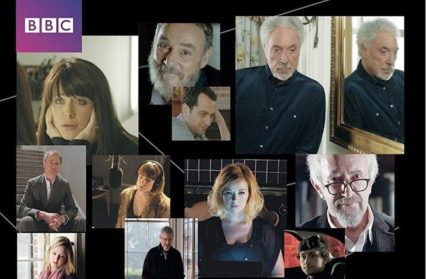
 Enjoyed this article? Support our writers directly by buying them a coffee and clicking this link.
Enjoyed this article? Support our writers directly by buying them a coffee and clicking this link.

